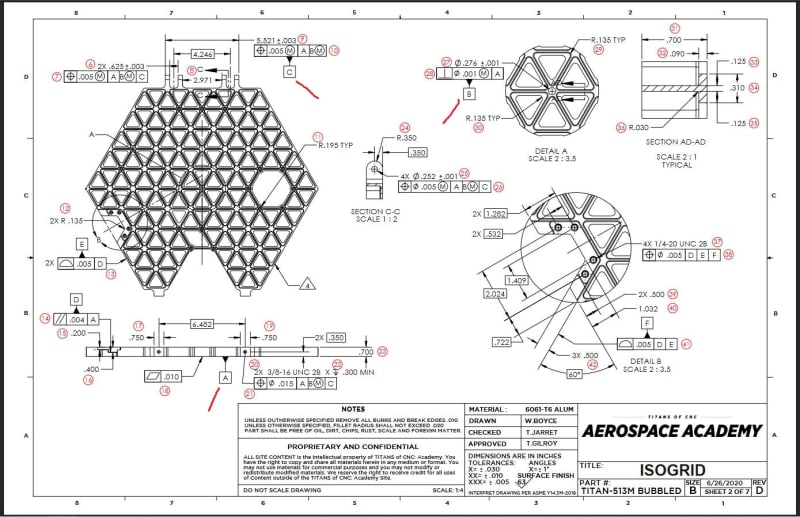sendithard
Industrial
Below is a drawing from titans of cnc educational manufacturing series.
I understand how datum A restricts 3 degrees. If this drawing had datum B and C pointing to the outer wall features creating two planes I understand how that part would be fully locked down.
Where I'm getting confused is when Datums are axis and centerplanes. Datum B is an axis and I don't see how without a dimension to another fixed datum that it isn't free to translate around on datum A or for that matter still spin in Z. Then I look at Datum C and see a centerplane, but again what keeps it from spinning around or translating all over datum A.
Thanks for any help. Below is the drawing and I will attach the complete pdf of all the pages.

I understand how datum A restricts 3 degrees. If this drawing had datum B and C pointing to the outer wall features creating two planes I understand how that part would be fully locked down.
Where I'm getting confused is when Datums are axis and centerplanes. Datum B is an axis and I don't see how without a dimension to another fixed datum that it isn't free to translate around on datum A or for that matter still spin in Z. Then I look at Datum C and see a centerplane, but again what keeps it from spinning around or translating all over datum A.
Thanks for any help. Below is the drawing and I will attach the complete pdf of all the pages.

